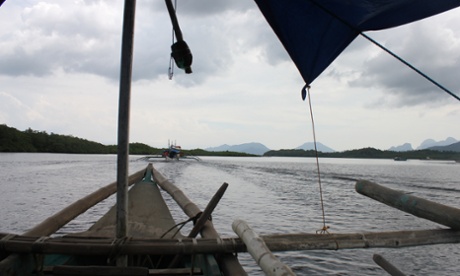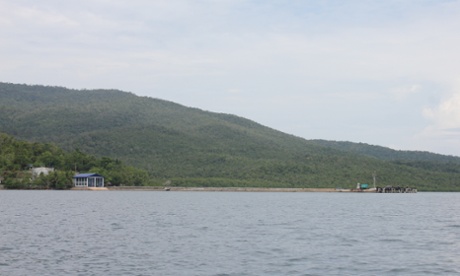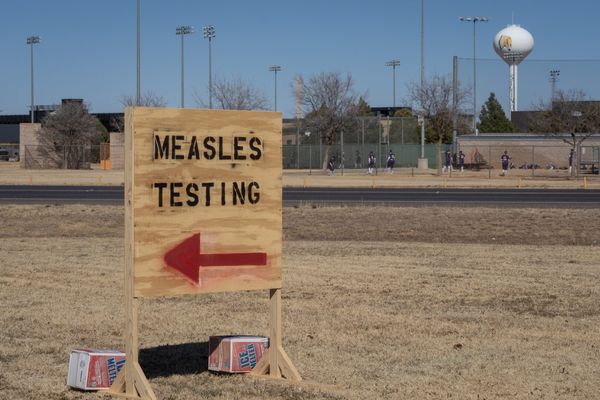It was American soldiers held captive by Japanese troops during the second world war who first dug through the thick, damp mud to build an airstrip on the Philippine island of Palawan.
Now, in 2015, two spy planes, one Japanese and one American, stand side by side on that same runway.
Conducting joint training activities with the US-supported Philippine Navy this month, the Japanese have finally made it back — this time with smiles and handshakes — to join up with their former enemies and resist a common foe: China.
All three countries contest Beijing’s land reclamation on islands in the disputed South China Sea, where it has built military installations to help bolster its claim. The Philippines argues it owns some of these islands while Tokyo and Washington fear China’s expanding influence in the region — and the potential for it to block a key sea route for roughly £3.17tn in trade.
These fears have brought 21 sweating Japanese pilots and engineers in grass-green jumpsuits back to Palawan this week, where they mingled and posed for selfies on the runway with their Filipino counterparts, in darker, greyer attire at Antonio Bautista air base.
It was first time the Japanese military had conducted training operations in the south-east Asian country since Imperial Japan surrendered in 1945 following a three-year occupation of the Philippines. Their troops were pushed out by Americans allied with guerrilla Filipino resistance forces.
A joint-mission in a Japanese P3-C Orion surveillance plane with a smaller Philippine Navy Islander aircraft over the South China Sea on Tuesday was sold by Philippines Lieutenant Commander Lued Lincuna as practice for potential humanitarian coordination, not to resist China.
But the message to Beijing is clear — a symbolic and historic partnership against China’s role in waters 80 miles off the west coast of Palawan, an island state in the Philippines on the edge of the South China Sea.
“We are conducting this exercise to enhance our interoperability, which means once we are joined, we go together,” Lincuna said at the air base, surrounded by dense tropical forrest. “It is the first time we fly together,” he said, adding that the exercise was conducted “outside territorial waters” west of Palawan. That means the South China Sea.

China is furious and the state news agency Xinhua this week ran an editorial piece calling Japan’s arrival in the Philippines as “the latest sequel to Tokyo’s meddling in the South China Sea.”
“By muddying the waters in the South China Sea, Tokyo also aims to divert increasingly intensive global attention on Japan’s lack of remorse over its atrocities during World War II, nearly 70 years after its surrender,” it said.
“Japan, which is not a party to the disputes in South China Sea, should abandon all attempts to stir waves in the area.”
But in the Philippines, where the older generation remembers hiding in the jungle from passing battalions of Japanese troops and vine-covered stone plaques honour those killed in massacres, the presence of Japanese boots has, interestingly, not stirred similar outrage.
“We Filipinos have very short memories,” joked one woman in Puerto Princesa, the town where the air base is located. Some also have Japanese blood — the children of Filipino women and Japanese soldiers who were based here.
As the Allies retook the Philippines, isolated Japanese soldiers fled into the dense, mountainous jungle and only emerged years later. On Palawan island, locals joke there might still be some hiding, waiting for the world to move on while unaware of the the fact that it has.
And with the military complaining that it is one of the weakest in Asia, the Philippines feels it needs Tokyo as a buffer against China, two months before the 70th anniversary of Japan’s surrender.
In Puerto Princesa, locals wear t-shirts stating “The Spratlys will never be conquered,” referring to the band of islands closest to the Philippines where Chinese warships now patrol.

Jennifer Berto, who works in a clothes and jewellery shop, says her graphic design artist made Spratly t-shirts following high demand from locals and American tourists.
“This is our new design,” she said at her shop in Puerto Princesa, holding a t-shirt with “Spratly belongs to us” written on it.
“People on Palawan support the navy because the islands are in the west Philippine sea,” she said.
She had not heard of the Japanese operation but was pleased they were here. “How nice,” she said, smiling.
The Philippine defence secretary, Voltaire Gazmin, said this week that Japan should become further involved with Manila’s military, arguing for a visiting forces agreement which would allow Japanese troops to be stationed in the Philippines, similar to a deal with Washington, which has naval ships in Filipino ports.
“It would be ironic if we cannot do exercises with Japanese forces when Japan is one of the only two countries – the other one being the United States – which are strategic partners of the Philippines,” Gazmin said on Wednesday.
An end to Japanese pacifism
For Japan, its militarised return to the world stage is a cautious one. After its defeat, Japan’s 1947 constitution — which was largely written by US occupation officials — forbade the formation of a traditional military force. The country has a self defence force which is restricted to protecting the mainland. This has been used only when conflicts abroad are considered a potential threat at home and Japan has deployed troops to Afghanistan and Iraq.
The push to restart its military after so many years of pacifism is down to one man: Japan’s prime minister, Shinzo Abe, who defied public opinion a year ago to overturn the country’s defence policy and make it easier for troops to fight overseas.
Abe and his supporters want to go even further, arguing for a more active military in the wake of China’s assertiveness. China and Japan have their own dispute over the Senkakus – known in China as the Diaoyu Islands – in the East China Sea. And although Japan does not claim any islands in the South China Sea it wants to make sure the area is not controlled by Beijing.
Ian Storey, from Singapore’s Institute of South East Asian Studies, says roughly 85% to 90% of Japan’s energy supplies come through the South China Sea which Tokyo fears could be blocked by Beijing.
“Any threat to the maritime trade through the South China Sea seems existential to the Japanese,” he said on the phone from Singapore.
“We’ll see a continuation of this trend. This dispute is a long way from being resolved. Japan will continue to step up its support for the Philippines and Vietnam and maybe some other countries in south-east Asia.”
Malaysia, Brunei, Vietnam, Taiwan also claim islands in the South China Sea, while China claims most. The naval corridor is thought to have oil and gas reserves. And Tokyo has also promised patrol boats to Vietnam, which itself is looking to pump up its military hardware to deter China.
“The Japanese can honestly say this is not about the South China Sea, this about south-east Asian nations improving their maritime security. But of course, it’s really about improving their capacity to be able to know what’s going on,” Storey says.
A New War of Bravado
Japan’s return to the South China Sea, where the carcasses of world war two ships lie in its reefs, has compounded a crisis that has led to the militarisation of all countries involved.
The risk of conflict is significant. Seventy Vietnamese soldiers were killed in a 1988 naval battle with China over the Johnson South Reef. And in 2001, a Chinese F-8 fighter collided with a US Navy EP-3 reconnaissance plane. In May this year, Chinese and Vietnamese ships collided as Beijing tried to set up an oil rig.
Oil survey ships operating in Reed Bank, close to the Philippines, have increasingly been harassed by Chinese vessels and Manila is beefing up its military in the area, increasing the threat of conflict.
At the forefront of this is Oyster Bay, a naturally protected cove with a deep harbour capable of hosting large warships. On the western side of Palawan, the bay’s biggest selling point is that it opens directly into the South China Sea. President Benigno Aquino has called the area the “frontline of our territorial defence operations”.

Philippine officials say the bay, which is protected from the monsoons by its high mountains, will be used to host the country’s two large warships and act as a strategic base for the United States to rotate troops and ships, who are presently stuck on the other side of the island.
A new security pact signed during a visit by the US president, Barack Obama, last year should also allow a greater American military presence on Filipino soil, including on expanded bases.
Oyster Bay is only accessible by sea but once a connecting road is complete, officials say the major work can be done.
Fishermen who live deep in a mangrove-lined inlet took the Guardian out into Ulugan Bay, which leads to Oyster Bay. They did this in small “pump boats”, a 15-foot canoe with two stabilising bamboo stalk, fish in the area which is full of coral reefs and protected waters.
The fishermen say the navy has warned them not to approach the inlet, although several still anchor nearby to catch fish living in the cove. Two Philippine Navy patrol boats cruised in the area during the trip.
Inside Oyster Bay, a concrete jetty and landing platform stretches out into the deepest waters in order for bigger ships to dock. A boathouse and a water tank are all that have been built until the road is finished and construction can begin. A snake hung from a overhanging tree and birds skimmed the calm water.

Further back in the dense jungle the Guardian found a number of workmen.
Cement trucks roared down the roughly three miles of paved road, and labourers, wiping their faces with dusty t-shirts, mixed concrete while furiously pushing ahead to complete the road so Oyster Bay naval base can be built.
This appears to be a race against time.
A hundred miles out to sea, China is working fast, dredging thousands of tonnes of sand from the seabed to create islands.
The Philippines and its allies have been showing their strength this week, flying over the South China Sea and conducting military exercises. Many hope that is remains just a show but the militarisation of the area is a tinder box.
“If we see more Japanese aircraft and ships operating in the area,” says Yoel Sano, Head of Political Risk at BMI Research, “then there will – mainly by law of numbers – be a greater likelihood of some sort of ‘incident’ or clash between them and their Chinese counterparts.”







